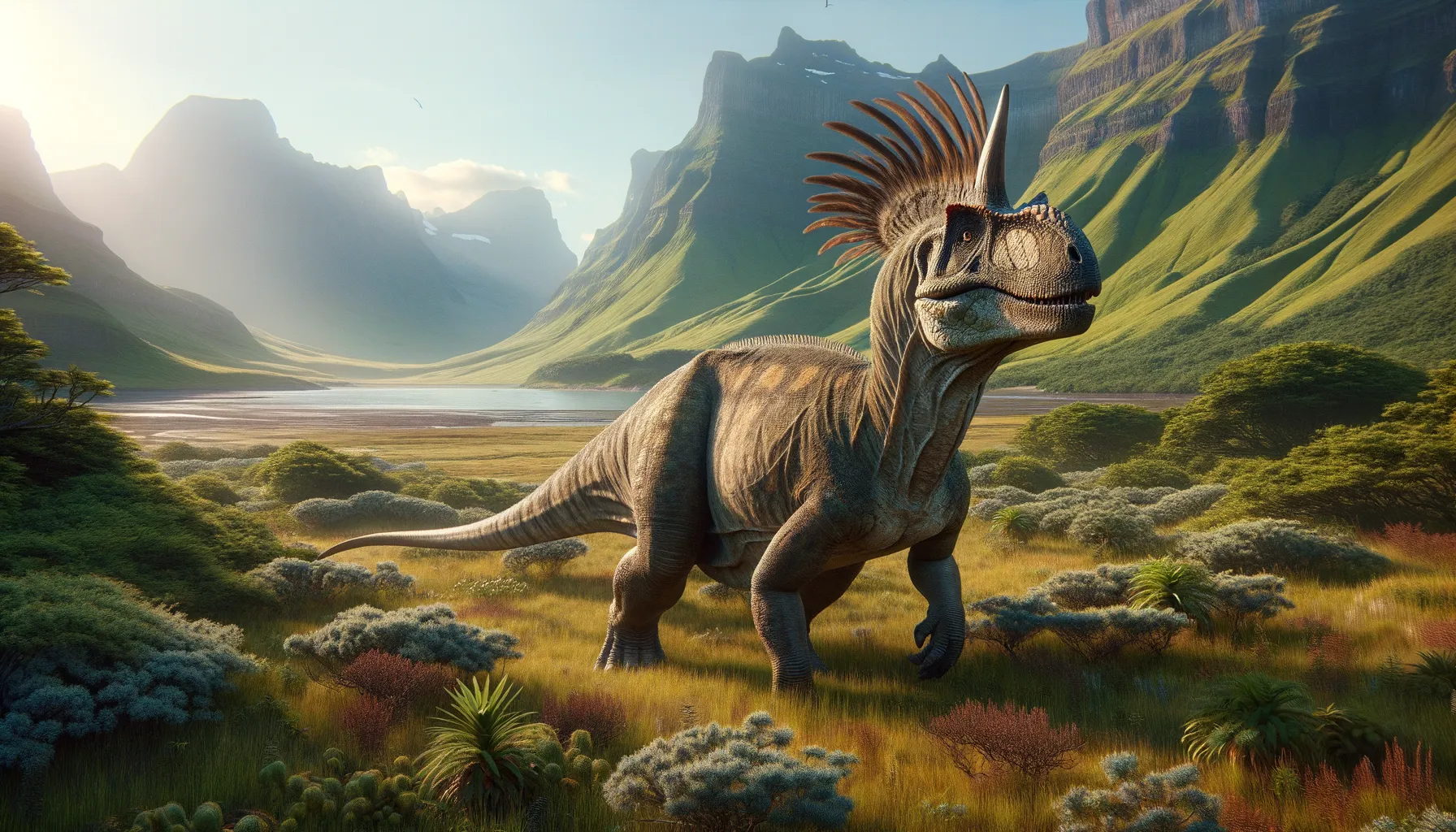
Jaxartosaurus
Crested herbivore of the ancient plains.
Period
Cretaceous
Length
Around 5 meters long.
Height
About 2 meters tall.
Weight
Approximately 1 ton.
Jaxartosaurus was a duck-billed dinosaur known for its elongated crest and herbivorous diet. It roamed the coastal plains of Central Asia during the Late Cretaceous period, approximately 80 million years ago. This dinosaur is notable for its distinct head crest, which may have been used in communication or mate selection. Fossils of Jaxartosaurus provide valuable insights into the diversity of hadrosaurids in Asia.
Diet
Jaxartosaurus primarily fed on plants. Its diet likely included a variety of ferns, cycads, and other low-lying vegetation. Its flat, grinding teeth were well-suited for processing fibrous plant material.
Hunting
As an herbivore, Jaxartosaurus did not hunt. It would have been constantly on the move to find fresh vegetation. Its herding behavior might have helped in detecting predators.
Environmental challenges
During the Cretaceous period, Jaxartosaurus faced challenges like changing climates and sea levels that affected vegetation patterns. Predators such as theropods were a constant threat. Adaptations like herding would have helped mitigate these risks. These environmental pressures might have influenced its migratory behavior.
Speed
Moderate, suitable for grazing and migration.
Lifespan
Estimated to be around 20 to 30 years.
First discovery
Discovered in Kazakhstan's Shymkent region in 1937.
Fun Facts
- Jaxartosaurus was a type of dinosaur known as a hadrosaur, often referred to as a 'duck-billed dinosaur' because of its flat, duck-like snout.
- It lived during the Late Cretaceous period, around 83 to 70 million years ago, in what is now Central Asia.
- Jaxartosaurus was a herbivore, meaning it fed on plants, using its specialized teeth and jaws to grind up tough vegetation.
- This dinosaur had a distinct crest on its head, which may have been used for communication or to attract mates.
- Jaxartosaurus belonged to a group of dinosaurs known for their ability to walk on both two and four legs, allowing them to adapt to different environments efficiently.
- Its fossils were first discovered near the Jaxartes River in Kazakhstan, which is how it got its name.
- Though not the largest hadrosaur, Jaxartosaurus would have been quite large, reaching lengths of up to 8 meters (approximately 26 feet).
Growth and Development
Jaxartosaurus likely hatched from eggs in nests built by parents or in communal nesting grounds. Juveniles grew rapidly to increase survival chances against predators. Growth rings in fossilized bones suggest fast growth periods early in life. As a hadrosaurid, it likely reached maturity in under a decade.
Habitat
Jaxartosaurus inhabited coastal plains with abundant plant life. These regions were likely characterized by broad river systems and deltas. Its habitat offered rich plant diversity for grazing. Seasonal floods might have shaped the landscapes it roamed.
Interaction with other species
In its ecosystem, Jaxartosaurus shared space with other herbivores, competing for resources. It coexisted with predators, necessitating vigilant group behavior. Social structures might have included complex vocalizations for communication. Interaction with other species shaped its defensive and social behaviors.
Natural lifespan
Jaxartosaurus naturally lived up to 30 years.
Reproduction
Jaxartosaurus likely laid eggs in shallow nests, possibly in colonies. Parental care might have included nest guarding and protection. The communal nesting strategy would have increased survival odds for the young. Egg sites suggest synchronized hatching within groups.
Social behaviour
Jaxartosaurus may have lived in herds, which provided safety from predators. Social behavior possibly included vocalizations facilitated by their crests. Herding allowed for cooperative vigilant behavior. Young dinosaurs would have learned survival skills within the group.
Fossil locations
Fossils of Jaxartosaurus have predominantly been found in Kazakhstan. The key site is the Shymkent region, where initial discoveries were made. Fossil evidence includes skulls and postcranial elements. These locations provide vital insight into its habitat and behavior.
